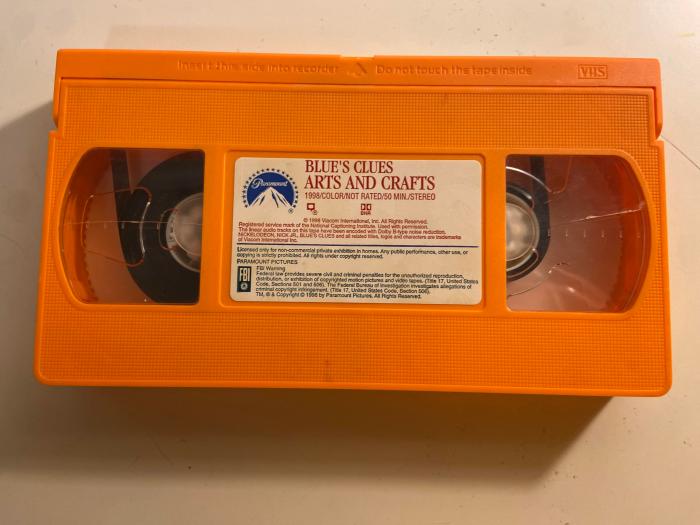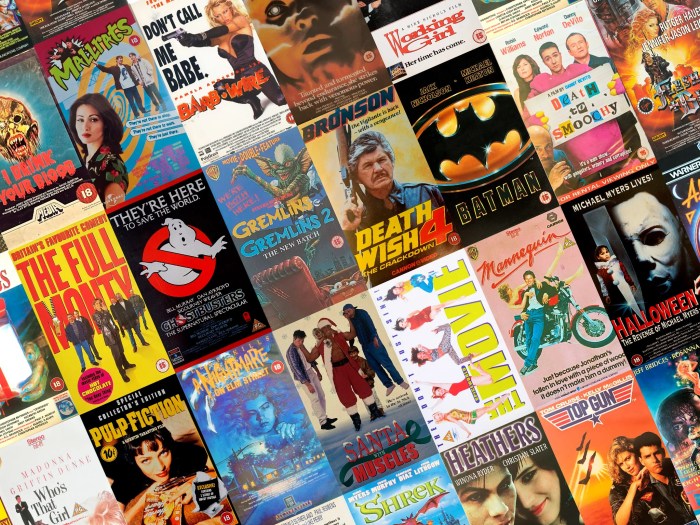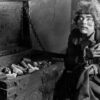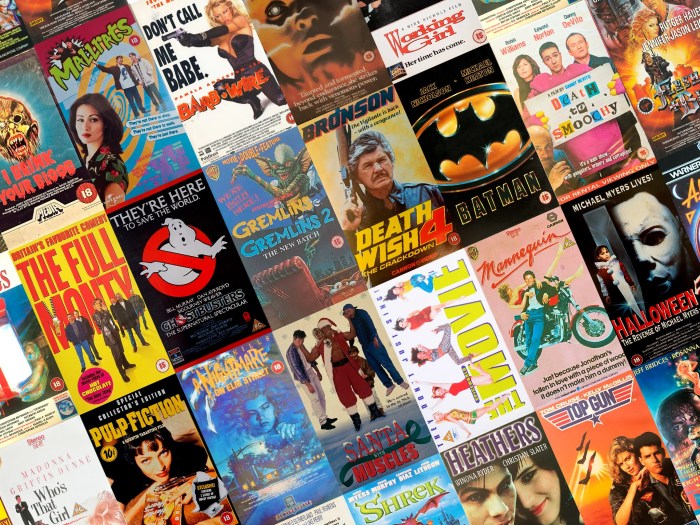Home movies vhs nostalgia dvd bluray cinema – Home movies VHS nostalgia DVD Blu-ray cinema: A journey through time, exploring the evolution of home movies from early film to the digital age. We’ll delve into the emotional connection people have with these personal films, tracing their transition from physical media to digital storage. This journey will examine the technical evolution, the role of nostalgia, and the unique storytelling aspect of home movies compared to professional cinema.
From grainy Super 8 reels to high-definition Blu-rays, the quality and capacity of home movie storage have dramatically improved. This exploration will also cover the challenges and advantages of digital storage, the methods of preservation, and the future of home movie creation and sharing. The nostalgic allure of home movies, their value in preserving family history, and their impact on personal filmmaking will also be examined.
Home Movie Formats Over Time

From the earliest days of filmmaking to the digital age, home movies have evolved dramatically. Capturing and preserving these personal memories has been a constant quest, driven by technological advancements. The transition from fragile early film to the convenience of digital formats reflects a profound shift in how we document and share our lives.The evolution of home movie formats is a fascinating journey reflecting technological progress and changing societal needs.
Early formats were often cumbersome and expensive, requiring specialized equipment and expertise. Later developments brought greater accessibility and affordability, ultimately democratizing the ability to capture and share personal stories.
Early Film Formats
Early home movie enthusiasts relied on fragile celluloid film. These formats, often 8mm or 16mm, offered a primitive yet significant method of capturing moments. The process involved manually loading film into cameras, which often resulted in some imperfections in the footage, from camera shake to intermittent frame skips. The quality of the images and sound was rudimentary compared to modern standards, yet these early formats allowed individuals to record their families and events, albeit with limitations.
Super 8 and 8mm
Super 8mm film gained popularity as a more accessible format compared to 16mm. The increased frame size of Super 8, combined with improved image quality, made it more appealing to home movie enthusiasts. The availability of projectors and editing equipment also contributed to its widespread use. 8mm film was a more economical alternative, albeit with slightly lower quality.
VHS
VHS (Video Home System) revolutionized home movie recording in the 1970s and 1980s. The magnetic tape format offered greater storage capacity than early film formats. VHS cassettes allowed for easy recording and playback, making it a more convenient way to store and share home movies. Video quality was significantly better than previous formats, with color and sound that were more vibrant.
DVD and Blu-ray
DVD (Digital Versatile Disc) and Blu-ray Disc formats represented a significant leap forward. DVDs provided greater storage capacity than VHS tapes, allowing for longer recordings and higher-quality video and audio. Blu-ray discs, with their superior resolution, offered an even higher quality of picture and sound, making home movies comparable to cinema quality. Digital compression methods improved, and the transition to digital storage reduced the fragility and physical limitations of the previous formats.
Table of Key Characteristics
| Format | Resolution | Frame Rate | Storage Capacity | Other Notes |
|---|---|---|---|---|
| Early Film (8mm/16mm) | Low | 24 fps (typically) | Limited | Fragile, required specialized equipment |
| Super 8mm | Improved | 24 fps (typically) | Moderate | More accessible than 16mm |
| VHS | Moderate | 30 fps (typically) | Relatively high (compared to film) | Magnetic tape, easy recording/playback |
| DVD | High | 24/30 fps | Higher than VHS | Digital format, improved quality |
| Blu-ray | Very High | 24/30 fps | Highest | Superior picture and sound quality |
Nostalgia and Home Movies: Home Movies Vhs Nostalgia Dvd Bluray Cinema
Home movies, those often-forgotten treasures captured on film, VHS tapes, or digital formats, hold a unique place in our hearts. They are more than just visual records; they are potent reminders of past joys, sorrows, and shared experiences. These intimate glimpses into family life, often tinged with the warmth of childhood memories, resonate deeply with viewers, sparking a wave of nostalgia.Home movies, in their varied forms, serve as powerful vessels for preserving memories and family history.
They encapsulate moments that might otherwise fade into the mists of time, providing a tangible link to our heritage and a window into the lives of those who came before us. The visual narratives of these movies, often accompanied by the sounds of laughter and whispered conversations, allow us to step back in time and relive cherished moments.
Emotional Connection with Home Movies
The emotional connection people have with home movies stems from their ability to evoke a profound sense of personal history. These films are not just images; they are imbued with the emotions and experiences of the individuals within the frame. The sight of a child’s first steps, a parent’s beaming smile, or a grandparent’s loving embrace can trigger a cascade of memories and emotions, often reawakening a sense of belonging and family.
These visuals are frequently linked to powerful sensory recollections of the period, further strengthening the nostalgic effect.
Role of Home Movies in Preserving Memories and Family History
Home movies act as invaluable historical documents, recording significant milestones and everyday events that would otherwise be lost. From graduations and weddings to holidays and everyday family activities, these films provide a concrete record of a family’s journey. They allow future generations to experience the lives of their ancestors, gaining a deeper understanding of their heritage and the values that shaped their lives.
Preserving these memories ensures the continuation of family stories and traditions, preventing them from being lost to time.
Examples of How Home Movies Evoke Strong Feelings of Nostalgia
The simple act of watching a home movie can trigger a flood of memories. A scene of a child’s first day of school, perhaps with mismatched shoes or a slightly apprehensive expression, can immediately evoke feelings of childhood innocence and the anxieties of growing up. Similarly, a wedding video, showing the joy and excitement of the couple and their families, can trigger feelings of love, connection, and the passage of time.
These scenes, captured in a specific time and place, transport viewers back to the moment, rekindling feelings of belonging and togetherness.
Cultural Factors Influencing the Value of Home Movies
Cultural values and traditions significantly impact the way home movies are perceived and appreciated. In some cultures, family gatherings and celebrations are highly valued, and home movies documenting these events hold a special significance. In others, preserving family history through oral traditions or written accounts might be more prominent, although home movies still play a role. The cultural context of the movies, from the costumes to the settings, further enriches their emotional impact and value.
Comparison of Emotional Impact Across Home Movie Formats
| Format | Emotional Impact |
|---|---|
| Super 8mm | Often evokes a strong sense of nostalgia, particularly due to the unique aesthetic and the sense of the past. |
| VHS | Evokes a sense of familiarity and shared experiences, often associated with specific eras and social contexts. |
| DVD | Provides a clear and accessible format for sharing memories with wider audiences, potentially strengthening connections across generations. |
| Blu-ray | Offers high-quality visuals, which can enhance the emotional impact by providing greater detail and clarity. |
These formats each carry a unique emotional resonance, reflecting the technology of their time and the cultural context in which they were created and viewed. The emotional response to each format is influenced by personal association and cultural values.
Home Movies and the Transition to Digital
The evolution of home movie storage has been a fascinating journey, mirroring the broader technological advancements of our time. From the humble beginnings of 8mm film to the ubiquitous digital formats of today, the way we capture and preserve these precious memories has undergone a dramatic transformation. This shift from physical media to digital storage has presented both exciting opportunities and unique challenges.The transition from physical media to digital storage has revolutionized the way we manage and share our home movies.
Digital storage offers unparalleled flexibility and accessibility, while also presenting new complexities regarding file management, preservation, and sharing.
Advantages of Digital Home Movies
The shift to digital storage has brought about several significant benefits. Digital files are easily copied and shared, eliminating the limitations of physical media. Furthermore, digital formats offer exceptional storage capacity, allowing for the preservation of countless hours of footage in a compact space. This increased capacity also facilitates the inclusion of higher quality footage, with improved resolution and color reproduction, compared to older physical formats.
Digital editing software provides powerful tools for enhancing and manipulating videos, enabling users to create elaborate productions with ease.
Disadvantages of Digital Home Movies
Despite the numerous advantages, digital home movies also present some challenges. The constant evolution of digital formats and software poses a risk of obsolescence. Files may become incompatible with future devices or software, rendering the content inaccessible. Another concern is the vulnerability of digital data to corruption, loss, or damage due to hard drive failures, software glitches, or cyberattacks.
Digital files are also susceptible to degradation from repeated copying or storage in unsuitable environments.
Ease of Sharing and Editing Home Movies Across Formats
Sharing home movies across formats has become considerably easier with digital technology. Sharing digital files is often achieved through cloud storage services, social media platforms, or email, making it possible to instantly share footage with friends and family worldwide. Editing capabilities are also significantly improved with digital formats. Specialized software enables users to trim, splice, add music and effects, and enhance the quality of their home movies with impressive ease.
This ease of sharing and editing was dramatically less straightforward with physical media.
Challenges of Preserving Digital Home Movies
Preserving digital home movies presents unique challenges. The rapid evolution of digital formats can render older files inaccessible on future devices. The constant need for updated software and hardware can be costly and time-consuming. Data loss from hard drive failures, accidental deletion, or cyberattacks is a significant concern. Furthermore, ensuring the long-term accessibility of digital files requires careful management and backups.
Transferring Home Movies from Physical Media to Digital Format
This process involves several steps, often requiring some technical know-how.
| Step | Description |
|---|---|
| 1. Gather Necessary Equipment | Obtain a digital video recorder (DVR), a computer, and appropriate cables for connecting your devices. |
| 2. Choose a suitable digital format. | Select the appropriate video format and file type based on your needs and the intended use of the files. |
| 3. Connect Physical Media to the Device | Connect your VCR or DVD player to the digital recorder using the correct cables. |
| 4. Record the footage to the digital recorder. | Use the recorder to transfer the footage from the physical media to a digital format. |
| 5. Import the files to your computer. | Transfer the recorded digital files from the DVR to your computer. |
| 6. Organize and Store the Files. | Organize the files using appropriate file naming conventions, and store them in a secure location. |
Home Movies and Cinema
Home movies, often dismissed as amateur productions, hold a surprising mirror to the art of filmmaking. These personal chronicles, capturing everyday moments and family histories, offer a unique lens through which to examine cinematic storytelling. From the simple compositions of early home movies to the evolving techniques of modern video, there’s a fascinating connection between the personal and the professional.
This exploration delves into the parallels, influences, and commonalities between these two seemingly disparate realms.The creative impulse behind home movies often mirrors the creative process of professional filmmakers. Both forms strive to capture and convey emotions, experiences, and narratives. Home movie makers, often driven by personal narratives, instinctively develop their own styles of composition, editing, and visual storytelling.
These experiences, in turn, can profoundly shape the personal filmmaking style of someone who later pursues professional cinema.
Parallels in Storytelling
Home movies and professional films frequently share similar narrative structures and thematic concerns. Family histories, celebrations, travels, and personal triumphs are common threads in both. The structure of a home movie, often a chronological account of events, resonates with the narrative structures employed in documentary filmmaking, where the flow of time and the unfolding of a story are paramount.
Influences on Filmmaking Styles
Many professional filmmakers have acknowledged the influence of their personal home movies. The ability to visually document and narrate personal experiences often provides a foundation for understanding visual storytelling. The techniques of framing, editing, and music selection, honed through home movie production, can translate directly into a professional filmmaker’s toolkit. For instance, the simple act of choosing what to include in a home movie, akin to a filmmaker’s creative decisions about what to include in a scene, is an important learning process.
Comparison of Techniques
Home movies and professional cinema employ similar techniques, though the resources and expertise differ considerably. Both utilize camera angles, lighting, and editing to shape the narrative. Home movies, while using basic equipment, often exhibit creative approaches to framing and composition. Professional films, with more sophisticated equipment, build on these fundamentals to create complex visual narratives.
Common Themes and Narratives
Home movies and films frequently share common themes. The celebration of family, the documentation of personal journeys, and the capturing of historical moments are prominent in both. The emotional resonance of these themes transcends the difference in production methods, highlighting the shared human experience that both forms aim to portray.
Key Differences and Similarities
| Characteristic | Home Movie Production | Professional Film Production |
|---|---|---|
| Equipment | Basic cameras, often consumer-grade; limited editing software. | Sophisticated cameras, advanced lighting, and editing software. |
| Budget | Low to minimal. | High. |
| Crew | Often just the filmmaker and family members. | Large crew (directors, cinematographers, editors, etc.). |
| Storytelling Focus | Personal experiences, family events. | Broader narratives, often with commercial aims. |
| Visual Style | Often informal, capturing the “real” moment. | Aesthetically refined, controlled for impact. |
| Commonalities | Capturing memories, telling stories, expressing emotions. | Capturing memories, telling stories, expressing emotions. |
Home Movie Editing and Preservation

Preserving our home movies is more than just keeping reels or tapes; it’s about safeguarding memories, stories, and a piece of our family history. This crucial step allows future generations to experience the past firsthand, fostering connections and understanding. Whether VHS tapes, Super 8 films, or even early digital recordings, the methods for organizing, restoring, and digitally archiving these treasures are varied and crucial.Proper organization and editing of home movies are essential for easy access and meaningful viewing.
Flipping through old VHS tapes, I’m struck by the nostalgic charm of home movies. DVDs and Blu-rays have their place, but nothing quite captures that feeling like those grainy, sometimes-fuzzy images. Thinking about how far things have come, though, it’s incredible how a new Lenovo workstation is making high-tech jobs more accessible to remote workers, a huge advancement for the modern world.
new lenovo workstation helps high tech jobs go remote. It’s a reminder that even with all the technical innovations, the enduring appeal of home movies, those snapshots of life captured on film, will always hold a special place.
Effective methods ensure that the memories captured aren’t lost in a sea of unorganized footage. Restoration techniques, both for physical media and digital files, can bring faded images and lost audio back to life, allowing viewers to experience the past in a clearer, more vibrant form. Digital tools have revolutionized how we approach both preservation and editing.
Organizing and Editing Home Movies, Home movies vhs nostalgia dvd bluray cinema
Careful organization is key to easily navigating and accessing treasured memories. Creating a comprehensive system for cataloging footage, including dates, locations, and events, is vital. Detailed descriptions and s help with searches. Software tools are invaluable for organizing files and creating playlists, allowing users to easily find specific moments or events. Utilizing metadata tags is a critical element in modern digital organization.
Restoring Damaged or Faded Home Movies
Physical media like VHS tapes and Super 8 films can suffer from damage, scratches, or fading. Techniques like careful cleaning, using specialized restoration software, and utilizing professional services are often necessary. Digital restoration tools can significantly improve the quality of images, removing scratches, dust, and other imperfections. The careful handling of physical media and utilizing appropriate preservation techniques is crucial.
Digital tools are valuable for both physical and digital media, helping to recover lost detail and improve visual quality.
Importance of Preserving Home Movies for Future Generations
Home movies provide a unique and intimate perspective on the past. Preserving them ensures that these personal stories are not lost to time, and future generations can gain a deeper understanding of their family history and cultural context. They offer valuable insights into societal changes, family traditions, and individual lives. They are more than just footage; they are a connection to our roots.
Digging through old home movies on VHS, DVDs, and Blu-rays is pure nostalgia. That same sense of wonder and suspense, you know, like those classic monster flicks from the cinema? Well, that’s kinda what the new Stranger Things Netflix series trailer, inspired by Stephen King, stranger things netflix series trailer stephen king , seems to evoke.
It’s a similar feeling of excitement for a new generation, making me appreciate the power of visual storytelling, whether it’s a grainy VHS tape or a polished Hollywood blockbuster.
Role of Digital Tools in Home Movie Restoration and Editing
Digital tools offer unprecedented opportunities for restoring and editing home movies. Software applications provide powerful tools for enhancing image quality, removing scratches and dust, and restoring color balance. Digital editing tools allow for precise trimming, splicing, and adding titles and music to create cohesive and engaging viewing experiences. Advanced digital tools, often found in professional software, can achieve very high levels of restoration quality.
Software Options for Home Movie Editing and Restoration
The table below Artikels some popular software options for home movie editing and restoration, categorized by features and price points. It’s crucial to choose software that aligns with your specific needs and technical proficiency.
| Software | Features | Price | Ease of Use |
|---|---|---|---|
| Adobe Premiere Pro | Professional-grade editing, advanced color correction, and visual effects | Subscription-based | Steeper learning curve |
| DaVinci Resolve | Powerful editing and color grading tools, available in free and paid versions | Free and paid | Variable, depending on the user’s familiarity with the interface |
| Final Cut Pro | Industry-standard editing software, robust features for high-quality video | Subscription-based | Steeper learning curve |
| iMovie | User-friendly editing software, suitable for beginners | Included with macOS | Very user-friendly |
| Windows Movie Maker | Simple, basic editing tools, often bundled with Windows | Included with Windows | Very user-friendly |
The Future of Home Movies
The evolution of home movie technology has been a fascinating journey, from the clunky early VHS tapes to the sleek digital formats of today. As technology continues to advance, the future of home movies promises even more innovative possibilities, impacting how we create, store, and share these cherished memories. We can anticipate significant changes in the way we capture, preserve, and relive our personal histories.Emerging technologies are poised to revolutionize the home movie experience, offering new ways to capture and interact with these visual narratives.
This evolution will not only enhance the quality and accessibility of home movies but also potentially reshape the very emotional connection we have with these visual records of our past.
Potential for New Technologies
New technologies like high-resolution 8K cameras and advanced AI-powered editing software will significantly improve the quality and accessibility of home movies. High-resolution cameras will capture stunningly detailed footage, enabling home movies to rival professional productions in quality. Simultaneously, AI-powered editing tools will automate tasks like color correction and scene organization, making the editing process far more efficient and accessible to a wider audience.
This trend reflects the growing trend towards ease of use in all aspects of technology.
Emerging Trends in Home Movie Storage and Sharing
Cloud storage and decentralized, blockchain-based systems will likely play a pivotal role in home movie storage. Cloud services provide secure and readily accessible storage for vast quantities of data, allowing users to share their home movies with family and friends globally. Blockchain technology could potentially enhance security and provenance tracking, adding another layer of protection to our precious memories.
These trends are reflective of the current global trend towards digitization and the growing desire for data security and accessibility.
Alteration of Emotional Connection
The way we experience home movies is likely to evolve with advancements in technology. Virtual reality (VR) and augmented reality (AR) technologies could create immersive experiences, allowing viewers to step back in time and relive significant moments with a new level of sensory engagement. This evolution could further strengthen the emotional connection we have with these recordings, enabling us to feel the warmth and atmosphere of past events more intensely.
For example, viewing a childhood birthday party in VR could evoke stronger feelings of nostalgia and shared joy.
Role of Social Media
Social media platforms will continue to be a crucial channel for disseminating home movies. Platforms like YouTube, TikTok, and Instagram are already used extensively for sharing short-form video content, and this trend will likely extend to longer-form home movie content. Users will be able to share their personal stories and experiences with a global audience, creating a sense of community and shared experience around these personal narratives.
For instance, families can showcase their unique cultural traditions and personal milestones on social media, enabling a global connection with their heritage.
Digging through old home movies on VHS, DVDs, and even Blu-rays brings a flood of nostalgia for the days of going to the cinema. It’s a stark contrast to the current digital world, where issues like stolen NFTs and resale blocks on platforms like OpenSea opensea stolen nft scams resale block are disrupting the digital art market.
Ultimately, though, nothing beats the warm feeling of watching those home movies again, a feeling that transcends both physical and digital mediums.
Projected Technological Advancements
| Technological Advancement | Impact on Home Movie Formats |
|---|---|
| 8K and beyond high-resolution cameras | Improved image quality, potentially requiring new storage formats |
| AI-powered editing tools | Automation of editing tasks, making home movie creation more accessible |
| Cloud-based storage | Increased accessibility and security for home movie data |
| Blockchain technology | Enhanced security and provenance tracking for home movies |
| VR/AR technology | Immersive viewing experiences, potentially changing how we perceive home movies |
| New, compact, and energy-efficient storage devices | Potential for increased storage capacity, improved portability |
Illustrative Examples of Home Movies
Home movies, those intimate glimpses into the past, offer a unique window into family history and personal evolution. They’re more than just recordings; they’re tangible memories, capturing moments of joy, sorrow, and everyday life. These films are a powerful way to understand how we’ve documented our lives and how those methods have changed over time.From grainy black and white reels to vibrant HD footage, home movies reflect the technological advancements that have shaped our society.
They also reveal the evolving ways we capture and share our experiences, reflecting societal norms and personal values.
A Vintage Home Movie: The 1950s Family Picnic
This 1950s home movie captures a family gathering at a local park. The grainy black and white footage shows the family posing for photos, children playing games, and adults enjoying the fresh air. The film, likely shot on 8mm film, reveals the era’s fashion, hairstyles, and social customs. The simple camera techniques and lack of elaborate editing emphasize the focus on capturing the event as it unfolded, rather than a curated narrative.
The background music is likely a simple instrumental piece or a pre-recorded song playing on a phonograph, reflecting the audio technology available. The overall atmosphere is one of casual enjoyment and a celebration of community.
A Modern Home Movie: A Family’s Adventure
This modern home movie, shot on a high-definition camera, showcases a family’s cross-country road trip. The creative use of dynamic camera angles, transitions, and upbeat music, as well as engaging narration, immerses the viewer in the experience. The use of voiceovers and visual effects allows the filmmaker to add commentary and emotions to the events, creating a more personalized story.
The editing style focuses on capturing the raw emotions of the journey, the awe of new sights, and the shared laughter and bonding. The movie is a testament to the evolving use of digital tools in storytelling.
Comparison of Home Movies Across Eras
Comparing home movies from different eras reveals a clear shift in technology and aesthetic. Early films were often simple, showcasing a snapshot of a moment in time. The emphasis was on capturing the event itself. Later, home movies incorporated more advanced techniques like editing, special effects, and narration. This reflects the development of filmmaking technology and the desire for more sophisticated storytelling.
Modern home movies often use sophisticated software for editing, special effects, and sound design to achieve a cinematic feel. This demonstrates how our understanding of capturing memories has evolved.
Emotional Impact of a Specific Home Movie
A home movie showing a child’s first steps evokes a profound emotional response. The raw, unfiltered joy and innocence of the moment are palpable. Seeing this film brings back a sense of nostalgia, a feeling of wonder, and a connection to our own childhoods. The movie’s significance extends beyond the visual; it triggers a personal memory of a similar experience.
The simple act of witnessing the child’s progress is an emotional testament to the value of capturing these pivotal moments.
Table: Aesthetics and Content of Home Movies Across Eras
| Era | Aesthetics | Content | Technology |
|---|---|---|---|
| 1950s | Grainy black and white, simple camera angles | Family gatherings, everyday life, candid moments | 8mm film, basic sound equipment |
| 1980s | Color, more dynamic camera angles, some rudimentary editing | Family vacations, special events, growing children | Hi-8 video, VHS tape |
| 2010s | High definition, cinematic-style editing, voiceover, visual effects | Family adventures, travel, celebrations, more creative storytelling | HD cameras, digital editing software |
Final Conclusion
In conclusion, home movies, from VHS to Blu-ray and beyond, represent a unique blend of personal history and cinematic storytelling. Their evolution, from physical formats to digital media, reflects the broader technological advancements of our time. Preserving these cherished memories, whether through careful restoration or digital transfer, is crucial for future generations. Home movies VHS nostalgia DVD Blu-ray cinema – a lasting legacy.





